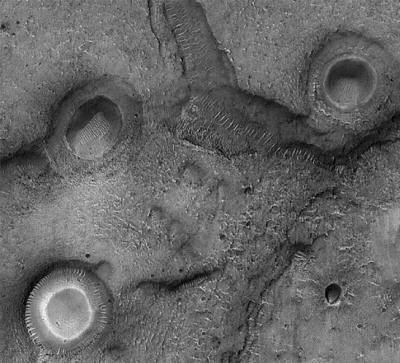|
by Stephen Smith from Thunderbolts Website
Portion of the Mare Acidalium quadrangle on Mars
Credit:
NASA/JPL/University of Arizona
According to a recent press release, a theory about how the planet Mars acquired its red color, as well as its barren desiccation has been proposed.
Dr. John Brandenburg, co-author of “Dead Mars, Dying
Earth," suggests that a nuclear explosion - albeit a natural one -
destroyed Mars almost 200 million years ago.
Particular isotopes of xenon gas
in the uranium deposits in the "Oklo reactor" region of Gabon are
said to indicate that a natural nuclear burned for thousands of
years until the fissile uranium was exhausted.
Several factors in both the Gabon and Mare Acidalium theories,
might lend themselves to other explanations when the time of both
observations is adjusted. Rather than 200 million, or two billion
years, what if both anomalies were created in the same more recent
events.
Valles
Marineris, Olympus Mons, the vast 900 kilometer crater in Argyre
Planitia, the terraced mounds in Arabia Terra, as well as both
Martian poles demonstrate strong support for the electric discharge
theory. In other articles, those powerful electric discharges on
Mars were theorized to have transmuted silicon into iron and
reformed silicon dioxide rock layers into the vast fields of
hematite
spherules that litter the landscape.
What could account for kilometers long fields of broken glass shards like those in Egypt or large sheets of “Darwin glass” from Australia?
It could have been plasma discharges in the form of lightning bolts and electric arcs that melted and fused the soils into glass. The timeframe is probably impossible to determine with any accuracy at this late date. Intense ionizing radiation most likely bombarded Earth and Mars at some time in the recent past.
Rather than nuclear reactors in the
ground it was
electricity from space that left its imprint.
|

